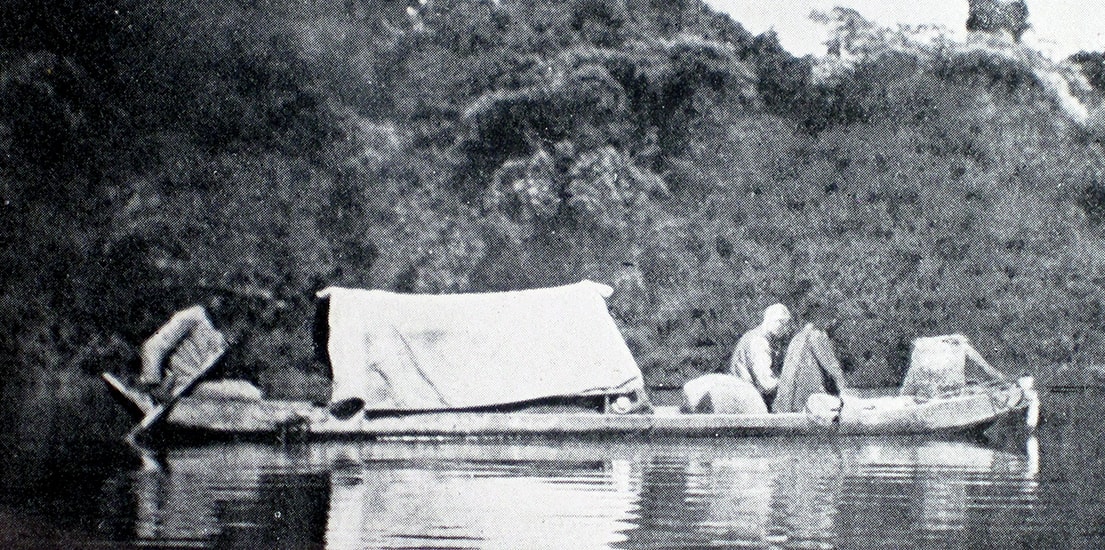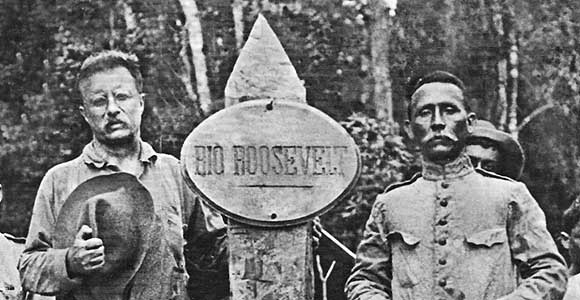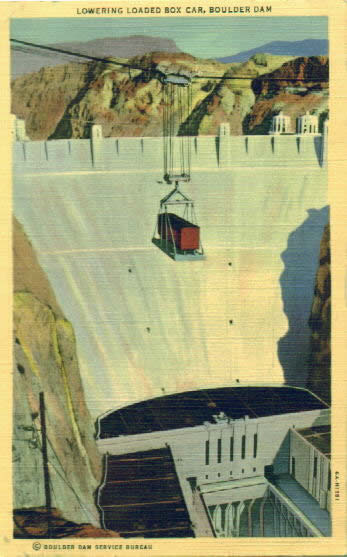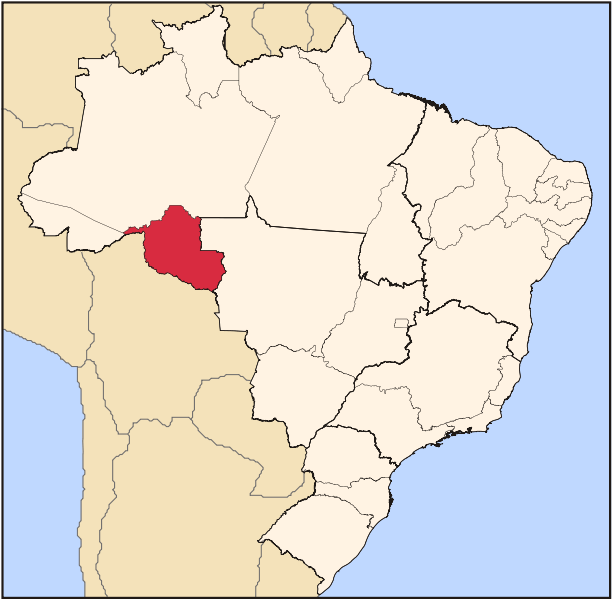The Rio Roosevelt

About rivers, Theodore Roosevelt was passionate. That passion changed the character of rivers, landscapes, and life in the Western U.S. More about that later, but first an illustrative and remarkable story.
A hundred years ago, Roosevelt co-led a small group that explored Brazil’s intimidating Rio da Dúvida (River of Doubt), a tributary of a tributary of a tributary of the Amazon on the eastern slopes of the Andes. The expedition was historic, tumultuous, and, as it happened, murderous.
It was the first exploration of the river by non-natives. By the end, it had called on TR’s leadership, vision, and risk-taking—qualities that helped him reshape rivers back home.
|
Brazil's state of Rondonia, the site of the river’s source, |
He told the story in his book Through the Brazilian Wilderness. He originally planned a simple speaking tour, having been invited “to address certain learned bodies” in Argentina and Brazil. But then “it occurred to me that . . . after I had finished my lectures I would come north through the middle of the continent into the valley of the Amazon.”
He contacted the American Museum of Natural History and the Brazilian government, both of whom assigned scientists to accompany the trip. Roosevelt’s co-leader was the famous Brazilian explorer Candido Rondon. (Rondon’s remarkable career as a military leader, conservationist, and social reformer continued until his death at 92 in 1952.)
Other explorers included TR’s son Kermit, scientists and their assistants, and Brazilian soldiers as porters and, where necessary, guards. Of the 19 people in the original party, only 16 returned.
The river itself was challenging, and its rapids required portages on precipitous terrain, home to jaguar and poisonous snakes. One of the soldiers drowned.
Human events made the trip even more hazardous. Unfriendly Cinta Larga natives shadowed the party and could have killed them, as they did kill subsequent explorers. TR suffered a leg infection that never properly healed and eventually shortened his life.
Then there was the murder. One of the soldiers, already marked as a slacker and complainer, was caught stealing scarce food. He shot and killed his accuser, a popular leader, and fled into the jungle. Three days later the party saw him standing on the bank, signing that he wanted to rejoin the boats. Uncertain about how they could shackle and hold him while coping with everything else, Roosevelt decided to pass him by. Later one of the senior men relented and went back to look for him but found no trace.
The River of Doubt was aptly named. Although its source was known, where it emptied was not. No one knew whether the trip would take days or weeks. Planning had been hurried, and provisions proved inadequate. At the end, everyone was near starvation, having survived on half-rations or less. Half the party, including Kermit, was ill and feverish.
Rio da Dúvida was renamed Rio Roosevelt.
It’s worth asking, why did Roosevelt do it? For millennia, people have explored rivers to find wealth or seize territory or win fame. Roosevelt needed none of those and did not stand to gain them on this river. Besides, enough was known about the region to predict that the trip would be perilous. So why did he do it?
 Theodore Roosevelt and Candido Rondon |
On one level, the question answers itself. Being TR, he found the prospect of adventure irresistible. Beyond that, I think his life-long fascination with rivers fed the impulse.
That fascination was nourished by rivers he encountered as a young man in the West. In Ranch Life and the Hunting Trail, TR wrote about life of a cowboy: “Hard and dangerous though his existence is, it has yet a wild attraction that strongly draws to it his bold, free spirit. He lives in the lonely lands where mighty rivers twist in long reaches between the barren bluffs.”
Roosevelt’s youthful experience with mighty rivers of the West opened his eyes to possibilities. In his Autobiography, published shortly before the Brazilian adventure, he reviewed his early years in public life:
"The reclamation of arid public lands in the West was still a matter for private enterprise alone; and our magnificent river system, with its superb possibilities for public usefulness, was dealt with by the National Government not as a unit, but as a disconnected series of pork-barrel problems, whose only real interest was in their effect on the reelection or defeat of a Congressman here and there . . . ."
As president in 1902, Roosevelt muscled the Reclamation Act through Congress. It established the U.S. Bureau of Reclamation for thirteen western states. The fourteenth, Texas, was added in 1906. The USBR devoted the next several decades to transforming the West by building dams.
 Lowering a loaded box car during construction of the Boulder (now Hoover) dam. |
In the 1870s, John Wesley Powell had warned that the arid West could never support widespread settlement, but Powell did not foresee the dams. They now store water, control floods, and supply thirsty cities, farms, and ranches for 31 million people. They generate electricity for homes, factories, and now data centers. The Bureau manages 332 “major” dams, at least 50 feet high.
TR looked at Western rivers and saw possibilities. He charted a new course that led to a more organized network of rivers. You might think of that network as a complex meta-river sustaining a growing population and growing industries.
Every year, more people move into this region once thought barely habitable.
Of course, there is the dark side. The meta-river’s dams have facilitated pollution, destroyed habitat, damaged estuaries, deprived forests of nitrogen, and depleted populations of salmon and other natives. For the irony is that many of the dams are filling with silt. So while their utility is short-lived, their damage has a long future.
Meanwhile the dams have created new political channels that float pork barrels as contentious as those TR hoped to eliminate. And now climate change brings the threat of drought against which the magic of dams will be powerless.
We see that John Wesley Powell was not all wet. We selectively remove some of the dams and do our best to navigate the meta-river that is TR’s legacy. We might call the new, civilized network our Rio Roosevelt, our own river of doubt. Again, we are unsure of what lies ahead.
Jon Roush serves on WRC's Board of Directors

